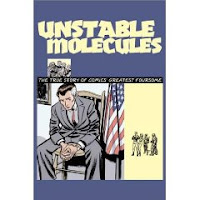
I just got word that there will once again be an interdisciplinary conference held in conjunction with the
Toronto Comics Arts Festival (TCAF). Here is the call for papers:
Another New Narrative?
Comics in Literature, Film, and Art (again)
An interdisciplinary conference at the Toronto Comics Arts Festival
and affiliated with the University of Toronto
9-10 May 2009
The answer to last year’s question—“The New Narrative?”—is “Not new, but certainly exciting and enlivening.” In conjunction with the bi-annual Toronto Comic Arts Festival, and in keeping with the spirit of sequels, we are again soliciting papers on a wide range of graphic novels and comic art.
Comics, whether in the form of novelistic illustrations, newspaper serials, animated films, film adaptations, graphic novels, or sequential art narratives, have been with us since the rise of literature itself, yet until recently such media have never been considered “serious”—or at least, serious enough to be considered novels that might be on university syllabi. But are illustrated novels and live action films really about the pictures and not the narrative? How can the history of the form be reconciled with consumer culture and the ill-defined categories of “high” and “low” culture?
Papers which examine and interpret these narratives in interdisciplinary forms are most welcome. Essays on novelistic illustrations, newspaper serials, animated films, film adaptations, graphic novels, or sequential art narratives may consider the following (incomplete) list:
graphic novels and auto/biography
illustrated and multi-media works
geopolitics/war and the graphic novel
film adaptations of comics series
engravings and caricatures
the Comics Code Authority
the “invention” of manga
other inventors and influences
bande desinée & European comix
early comics & comic history
illustrations in (literary) novels
woodcut and “silent” artists
Proposals should be 400-500 words and must clearly indicate significance, the line of argument, principal texts considered, and relation to existing scholarship (or originality). One email copy of the proposal, and a 50 word bio note must be included, as an attachment in MS Word.
Deadline for proposals is 15 March 2009 (responses by 31 March 2009).
For more information, contact
Dr Andrew Lesk, Assistant Professor
Department of English, University of Toronto
E-mail: andrew.lesk@utoronto.ca
 How did I miss this comic over at Roar of the Tigers? As a comics scholar, I'm fascinated. As a Tigers' fan, not so much. Much woe is right. Just look at how sad Paws is here.
How did I miss this comic over at Roar of the Tigers? As a comics scholar, I'm fascinated. As a Tigers' fan, not so much. Much woe is right. Just look at how sad Paws is here.














